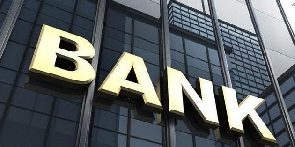 Ghana’s banks were pushed into losses following the debt revamp excercise
Ghana’s banks were pushed into losses following the debt revamp excercise
Prudential financial data released by most of the universal banks in the country during the first quarter (Q1) of 2023 affirmed strong, robust and scintillating performance of the industry, in spite of the challenges during the last quarter (Q4) of the preceding year, which were occasioned largely by the government’s debt restructuring programme, specifically the domestic debt exchange programme (DDEP).
The industry’s balance sheet during Q1 of 2023 depicted impressive performance comparative to Q4 of 2022. This fairly reflected robust growth in total assets, which were integrally funded by sustained growth in deposits and increased capital levels.
Performance of the industry’s income statement during the period under review was very strong; the surge in profit after tax (PAT) remained quite encouraging; and this is attributable to the considerable growth in revenues relative to operating expenses.
Financial intermediation was enhanced by the boost in private sector credit, which increased from approximately GH¢47.07 billion during 2022 to GH¢50.51 billion during 2023 Q1, representing 7.31% increase during the period.
The industry’s soundness and resistance to vulnerabilities inherent in the broader financial system manifested in the strong performance of key indicators such as asset quality, capital adequacy ratio (CAR), return on equity (ROE), liquidity, non-performing loans (NPLs) and sensitivity to market risk.
The soundness of these key indicators is positively linked to significant improvement in the performance of the industry’s profitability and balance sheet; and points to an industry that is characteristically resilient and stable, with the capacity to absorb shocks; while deepening financial intermediation.
The industry recorded capital adequacy ratio in excess of 21.96% during 2023 Q1. This ratio remained above the Bank of Ghana’s regulatory requirement of 16.60% (as at December 2022); and more than twice the minimum capital adequacy ratio (8%) and capital conservation buffer (2.5%) requirements under Basel III (10.5%).
CAR reflects better capital-to-risk-weighted-assets ratio; and resonates strong capitalisation and improved financial resilience of institutions within the banking industry. Due to the industry’s strong capital position, the higher capital adequacy ratio suggests, in the event of any credit risk concentration shocks, banks would still maintain capital adequacy ratios above the minimum regulatory capital requirement.
The overall financial condition of the industry is exemplified in the quality of banks’ assets anchored by the quality of loan and investment portfolios; and efficient credit administration programmes. The foregoing is indicative of strong risk mitigation measures for capital and loan formation; and indicative of financial stability of the banking industry.
The average return on equity for 2023 Q1 is indicative of how banks in the industry are efficiently and effectively generating profits from the investments of shareholders.
Liquidity coverage ratio (LCR) of the industry during the period under review remained over 92.98%. This affirms the availability of high-quality liquid assets to fund short-term cash outflows. The relatively high liquidity ratio (over 92.98%) is indicative of the banks’ preparedness for potential market-wide shocks to avert any short-term liquidity disruptions that may plague the market.
Indicators of the industry’s profitability such as profit-before-tax (PBT), profit-after-tax (PAT), return on assets (ROA), return on equity (ROE), earning assets and net interest income, amongst others, showed significant improvement and high level of operational efficiency during 2023 Q1 relative to year-end, December 2022.
Generally, investors perceive return on equity as a better metric for effective assessment of the market value and growth of institutions in the banking industry. The incredulous performance of the industry (including comparatively high ROE) during 2023 Q1 is envisaged to be sustained throughout the current financial and beyond.
This growth potential is expected to serve as unique attractive tool for investors to the banking industry to shore up capital and investment in the financial sector; and broader Ghanaian economy.
Further, the improved net worth, high capital adequacy ratio (in excess of 21.96%) and sustained non-performing loans ratio (15.92%) attest to the solvency of banks in the current financial year.
The industry’s assets quality is expected to witness further improvements as banks strengthen credit risk assessment while creating more loans and expanding their loan books; and intensify their loan recovery efforts. The current financial posture of the banking industry is one that is robust and averse to credit concentration shocks.
It is refreshing to state, banks in the industry have taken proactive steps to strengthen their risk management practices and internal control mechanisms. These initiatives have strategically positioned the industry towards containment and mitigation of potential solvency challenges that may emanate from loan concentration.
The banks are not oblivious of their critical role in preserving stability of the country’s financial system; and therefore, are consistently dialoguing and collaborating with the Bank of Ghana (BoG) and other key stakeholders to ensure sustained stability of the banking industry.
Conclusion
Ghanaian banks are responding positively to the economic recovery; and ready to transact business with well-meaning Ghanaians – individuals, households and businesses. Further, the banks are strategically positioned to resist any potential economic shocks and financial crises through improved operational performance, adequate capitalisation; and improved government policies and programmes towards economic stimulation and accelerated growth.
Stated in different terms, banks in the industry are strategically positioned to better withstand potential episodes of financial stress; while providing improved financial services to people within the economy.
The sustained growth in deposits and higher capital levels speak to the potential for financial deepening and credit growth. The banking industry projects positive outlook in the immediate-, medium- and long-term. Sustained reforms and operating strategies are reflecting in profitable, sound, solvent and resilient banking industry which remains ready to anchor accelerated growth through prudent lending to individuals and businesses in key and strategic sectors of the Ghanaian economy.
Undoubtedly, the resilience of banks remains robust as evidenced in the industry’s spectacular performance during the first quarter of 2023. This assertion is ably supported by strong capital position attributed largely to higher profitability during the review period.